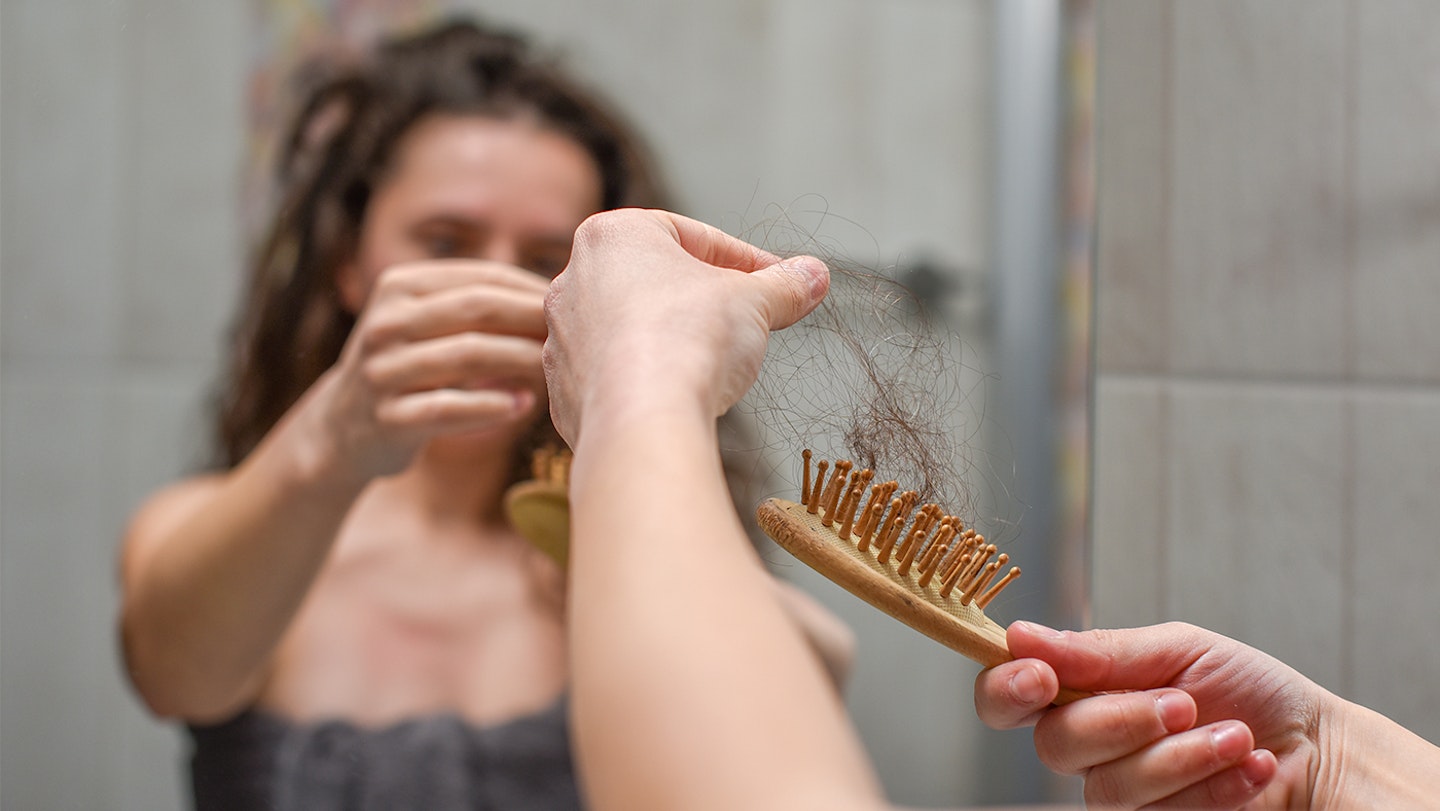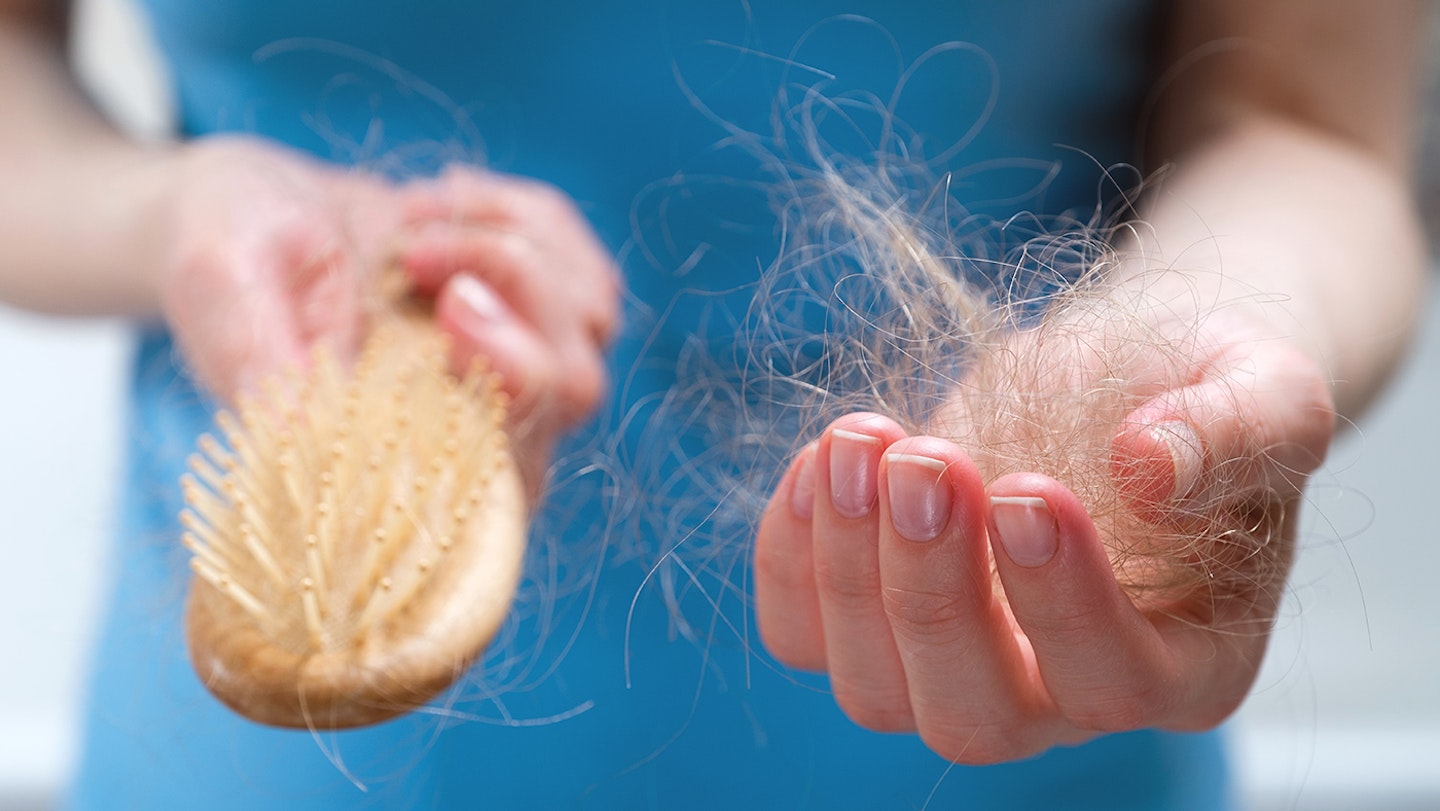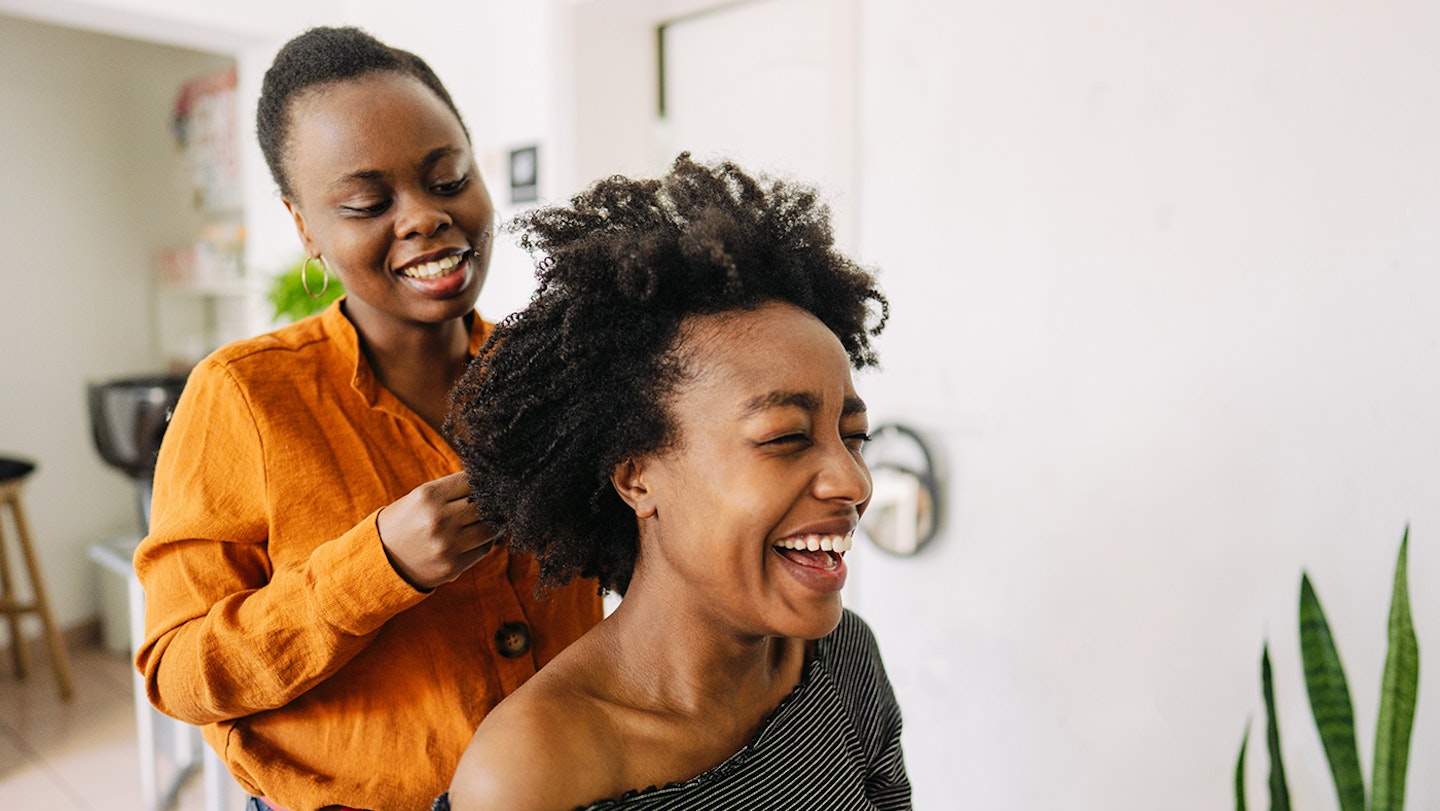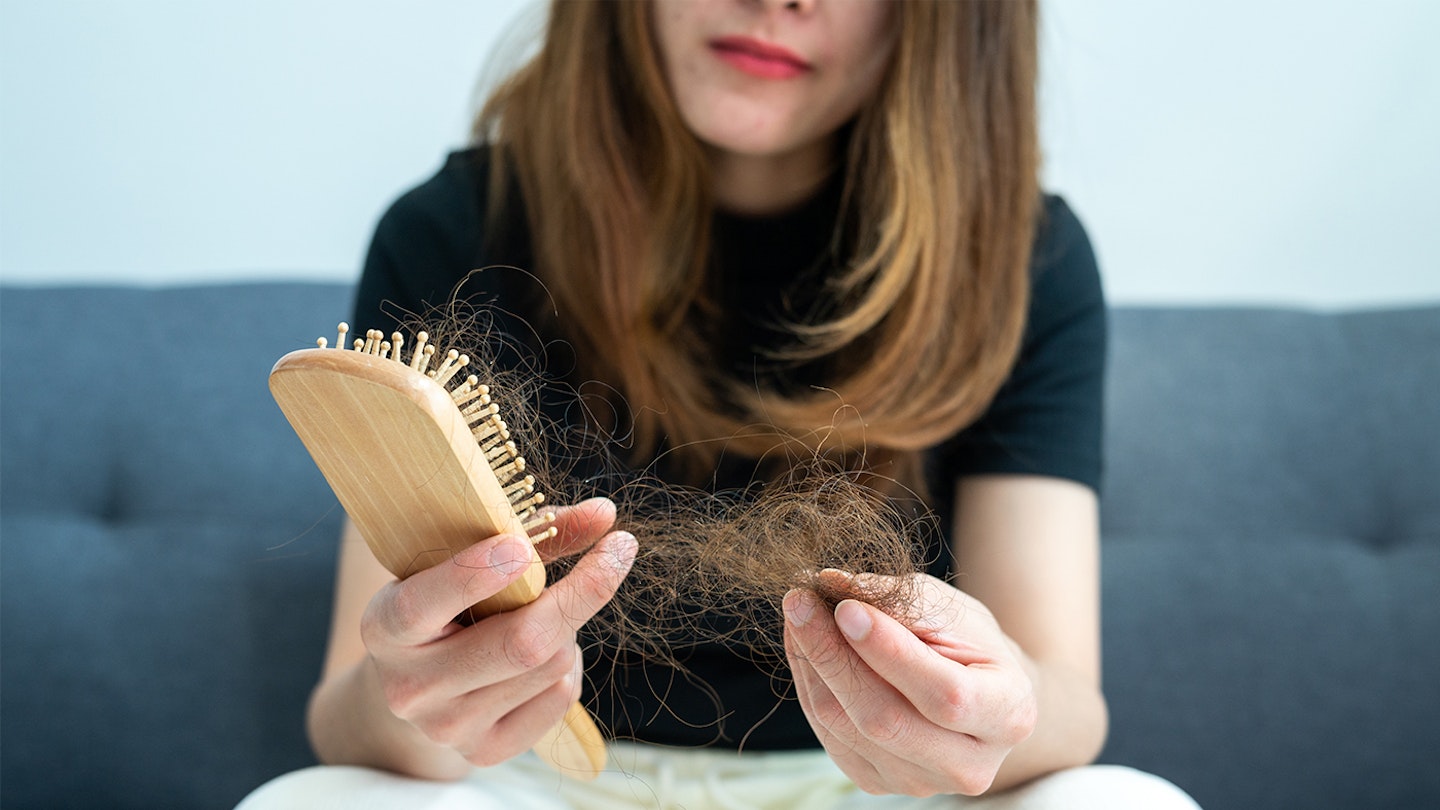If you’ve nurtured lustrous, swishy locks and hair growth in pregnancy, it can be a shock when you experience hair loss after pregnancy. But don't fret, this is actually very normal!
In those bleary, but happy, first weeks of motherhood, you’ll be lucky to get dressed, let alone worry about what your hair looks like. Until it decides to remind you – by coming out in clumps and blocking the plughole (no, it’s not just you).
But it’s not another nail in the coffin of your pre-baby appearance – with our help, it can be the latest stage in your mum metamorphosis.
How does hair grow?
Hair growth is a complex process that occurs in cycles and is influenced by a variety of factors, including genetics, hormones, and overall health. Here is an overview of how hair grows:
Anagen phase (Growth phase):
• Hair growth begins in the hair follicles, which are small, pocket-like structures in the skin.
• The root of each hair strand is located in the hair follicle, and it is here that active cell division occurs.
• During the anagen phase, which can last for several years, hair cells divide and multiply, leading to the production of new hair cells.
• The new hair cells push the older ones up through the follicle and out of the scalp, forming the visible part of the hair.
Catagen phase (Transitional phase):
• After the anagen phase, your hair will enter a transitional phase known as the catagen phase.
• This phase is fairly short and will last only a few weeks.
• During the catagen phase, the hair follicle shrinks, and the hair strand detaches from the blood supply, which means it stops growing.
Telogen phase (Resting phase):
• Following the catagen phase, hair enters the telogen phase, which is also a relatively short phase, lasting a few months.
• In this phase, the hair strand is fully formed but is not actively growing.
• Eventually, the old hair is pushed out by new hair, and the cycle begins anew.
The length of each of these phases and the number of hairs in each phase can vary depending on genetics and other factors. This is why people have different hair lengths and growth rates.

Why does hair loss after pregnancy happen?
Not every woman experiences postpartum hair loss but, if it does happen, remember it’s a very normal and natural process. Most of us experience hair loss around the third month after birth, or a little later breastfeeding.
Like almost everything else right now, you can thank your hormones. Oestrogen levels increase during pregnancy, which can prolong the growth phase of the hair.
This means less hair falls out, making what you have gorgeously thick, healthy and shiny. The kicker is that, after you’ve given birth, your hormones revert to normal and the hair that was supposed to fall out but didn’t, comes out all at once.
The average person loses about 100 hairs a day but new mothers are said to shed about 400 hairs a day.
How long does hair loss after pregnancy last?
The loss usually continues for 10-12 weeks but, after this, new hair should start to appear.
There’s not much you can do to stop this but, with good haircare and dietary habits, you can encourage regrowth.
If it’s still falling out, there may be an underlying cause, such as diet, stress or hormonal balance, which needs addressing with a trichologist (a hair and scalp specialist).
Symptoms of hair loss after pregnancy
As you'd expect, the primary symptom is noticing more loose hair than you might be used to on your hair brush or pillow. You'll probably also find hair on the floor or stuck to your clothes.

Hair loss after pregnancy treatment
While there sadly isn't any specific treatment for postpartum hair loss, there are a few steps you can take that can help.
What should I eat to stop hair loss after pregnancy?
Hair is made up of proteins therefore ensuring you have a balanced diet will help to encourage regrowth.
"Dark leafy greens, berries, protein-rich foods like red meat, fish, tofu and lentils are all reputed for their hair-strengthening properties," says expert Tina Farey, Editorial Director at national hairdressing group Rush.
And brunch will take on a whole new meaning when you learn that those perfectly poached eggs are a fantastic source of protein and biotin too, which may promote growth. So get to know your nutrients and eat your way to feeling fabulous!
The vitamin fix
When your barnet is creeping further and further away from your hairline, you’re bound to get stressed about the situation, but this will only exacerbate things.
Trichologist Ricardo Vila Nova stresses the importance of not only a diet rich in hair-loving protein but also checking you’re not depleted in vitamins and minerals.
"By looking at it under the microscope, I can see what your hair, your scalp – and, ultimately, your body – are lacking, and whether or not your pregnancy hormones have calmed down," says Ricardo.
He would then prescribe suitable supplements and hair treatments, plus laser and Dermaroller solutions for problematic scalps.
"People often forget their scalp, but this is where your hair is 'living'. Think of it like the skin on your face. If the pH levels are out of balance, or it’s too dry or oily, your hair won’t be healthy."
Care for your scalp
At home, massage is key. Get your partner or a friend to apply gentle pressure to the scalp with their fingers or hands, which will stimulate blood flow and help you relax. Alternatively, brushing the scalp every night can also help stimulate blood circulation, but make sure you’re using a soft natural bristle brush as it will help massage the scalp and reduce breakage
And introduce a nourishing treatment, such as Kérastase Initialiste Advanced Hair And Scalp Concentrate, into your daily routine. If your scalp is tight, a switch to a more hydrating shampoo should help, too.
"Once you’ve finished breastfeeding, hyaluronic acid and spirulina supplements will help to promote hydration and mineralisation, leading to thicker, healthier hair," says Ricardo.
Embrace change
Once your hair starts to grow back, many women note that the colour, texture or condition is different.
"Hair grows in seven-year cycles, so it can slowly and naturally change over time," says Ricardo. "Pregnancy speeds up this whole process, so those changes seem to happen overnight, which can be a bit of a shock."
If your ‘new’ hair is radically different, you may need to rethink your old style, start colouring your hair if more greys are appearing, or adjust to an unfamiliar lustre or thickness.
One way to get your hair groove back is a style refresh. According to Tina, hair loss is often most visible at the front, with small, thin, weak strands growing along the hairline, so why not try out a new look by experimenting with a fringe?

"Whether it’s a blunt fringe or curtain ‘bangs’ they’re a great way to add volume and texture to your hair, helping it to appear fuller and thicker" says Tina.
"Alternatively, try a shorter ‘do as they often make fine hair appear fuller, and are easier to manage when it comes to small hands reaching and grabbing! Short styles don’t pull the hair downwards in the same way longer looks might, thus giving it more lift."
But pregnancy can bring really positive, lasting things to your appearance, too.
‘I’ve known women with previously very weak tresses who, after having a baby, have enjoyed the best hair of their life. And, even better, it stayed that way,’ says Ricardo.
Hairstyles to disguise thinning hair
Not sure you’ll find time to pop into a salon now that your schedule has been overhauled? If you’re struggling for time and want to feel confident between appointments, there are a number of easy-to-do styles that will mask any thinness according to Tina.
"For a start, never underestimate the power of a good ponytail and with this simple upgrade you’ll fall back in love with your hair," says Tina.
"Start by gently backcombing your hair to create volume at the crown, disguising any thinness around the top of your head – now is a great opportunity to add dry shampoo or volumising powder. Next, comb back carefully but not neatly using a paddle brush, and secure at the top of the neck with a hairband to create the ponytail. Then take a few small strands from the ponytail and wrap around the band, securing in place using a hairpin. Pull at a few strands on either side at the front of the face so they delicately hang loose."
How can I prevent hair loss after pregnancy?
Unfortunately, whether or not you experience postpartum hair loss is out of your control and can't be prevented. Rest assured though that it is normal and it will get better over time.
Meet the experts
Famed trichologist, Ricardo Vila Nova, is known around the globe as ‘The Hair Whisperer’.
Tina Farey is the Editorial Director at national hairdressing group Rush.
Emily Gilbert is the Features & Reviews Editor for Mother&Baby and has written for the website and previously the magazine for six years. Specialising in product reviews, Emily is the first to know about all the exciting new releases in the parenting industry.
